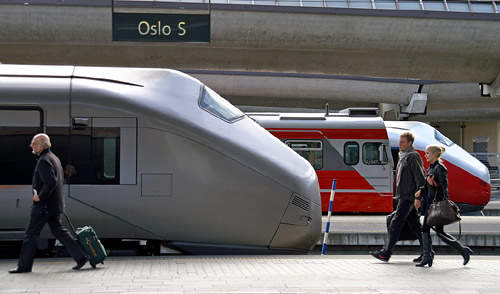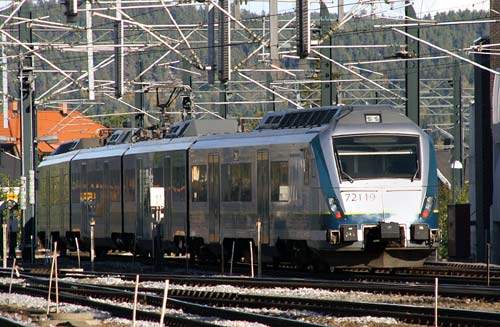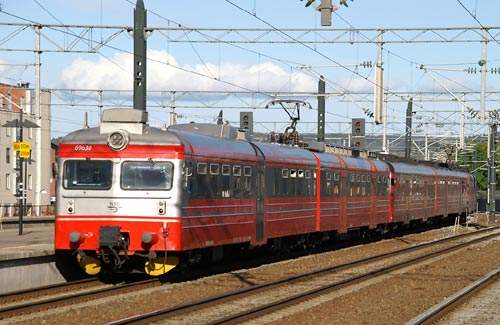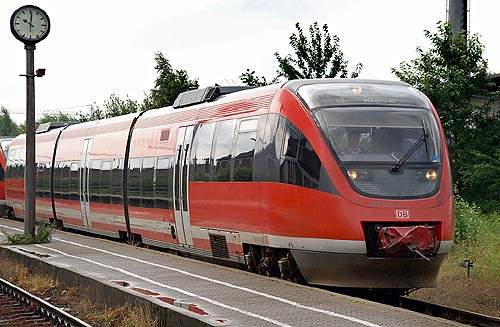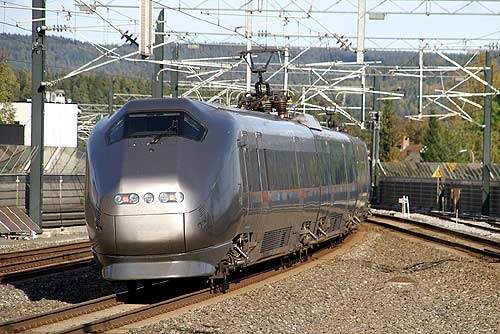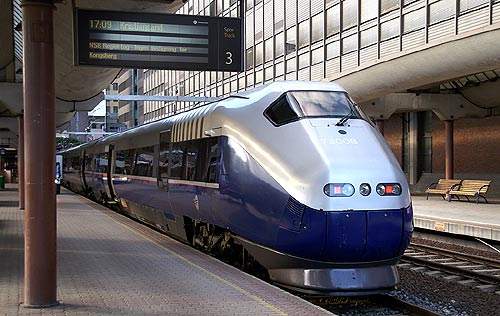Passenger train operations in Norway underwent a massive reorganisation during the late 1990s. The state-owned railway operator, NSB, made huge investments in new rolling stock and upgrading the infrastructure, as the country aimed to ensure that rail plays a growing role in meeting national transport needs.
A large country with a number of widely-spread commercial centres, good transport links are vital to the success of Norway, which has one of the world’s strongest economies.
Around a quarter of Norway’s population is in the Oslo area, which also has by far the highest concentration of the country’s rail resources. Oslo S (central station) is the hub of long distance and regional rail services, plus the extensive suburban network. The capital’s public transport operator, Oslo Sporveier, also runs the T-bane (metro) and Trikken (trams), as well as buses and harbour ferries.
The project
The Norwegian government decided that the best way to advance the cause of rail travel would be to reorganise passenger operations under three divisions, one each for short-, medium- and long-distance travel. Great importance was placed on attaching the brand names ‘Signatur’ (inter-city) and ‘Agenda’ (regional) and ‘Puls’ (suburban) services as part of the drive to increase passenger numbers by 15%.
However, that marketing aspect proved to be ineffective and the labels were dropped during 2003. The names had been tarnished by operating problems with the new train sets and created customer confusion.
Infrastructure
Norway’s national rail infrastructure authority, Jernbaneverket, is investing Nkr1.6bn to upgrade the three principal long-distance corridors, after funding approval for the Norwegian Railway Plan covering 1998-2007 was given by the country’s parliament.
The money is designated for a mixture of improvements to increase line speeds and raise capacity. In order to offer the benefits of the combination of infrastructure improvements and new trains, new stock was phased-in alongside existing trains with completed infrastructure upgrading.
To tie in with the service improvements, a programme of major enhancements was undertaken at the principal stations on the routes involved, as a joint venture between Jernbaneverket and NSB. Negotiations have also been taking place with local authorities which support commuter and regional services over how they can be linked into the new-look network.
Rolling stock
Each of the three short-lived passenger operations units placed orders for new rolling stock as part of the improvement programme, but there were many teething troubles. Local services employ a fleet of 36 four-car 160km/h (100mph) EMUs from Ansaldobreda of Italy (also a supplier to the Oslo tram fleet). Designated BM72, they are augmented by the best of NSB’s existing electric multiple unit fleet, upgraded to give it a further ten to 15 years of use.
Medium-distance services on non-electrified routes were boosted by a fleet of 11 new ‘Talent’ two-care diesel multiple units, a product with diesel and electric versions originated by the Waggonfabrik Talbot plant in Aachen, Germany, now part of Bombardier. Modified to cope with the rigours of operating in central Norway during winter, the units entered service 2001-02.
Unlike most of the Talent variants, these BM93 sets feature tilt equipment to reduce journey times of previous stock over the curving alignments commonplace on the NSB network. In spite a high standard of low-density passenger accommodation, the trains have attracted criticism over their suitability for relatively long journeys.
Norway’s first high-speed trains included the BM71 three-car EMU sets by ADtranz (later Bombardier) at the Strømmen plant 1997-98. Built specifically for the ‘Flytoget’ service to Lufthavn Gardermoen, Oslo’s new airport situated 48km from the city, the trains are now operated independently of NSB and there is no ticket interchangeability.
The BM71 and the visually similar BM73 sets represented a departure from the earlier reliance upon hauled stock for premier services. Unlike the 19min, 210km/h (131mph) shuttle operation of the BM71, the BM73 were for long-distance services and accordingly have interiors more appropriate to that role. To help maintain speeds over conventional track, they are fitted with tilt equipment, as is the B-series delivered from 2002 intended for regional services; the latter having higher density seating than the A-series.
The original 16 BM73 units cost a total of Nkr1m, but ran for two years at a reduced speed of 160km/h instead of the designed 210km/h and experienced temporary withdrawal from service because of serious axle design problems and unreliable tilt mechanisms. They consist of four cars, and can seat 207 passengers, 56 in first class and 151 in second class. They are air-conditioned throughout, with each unit powered by six 440kW three-phase ac traction motors, developing a continuous power rating of 1,950kW.
The trains feature a cafe/bistro car, but first-class passengers are also offered at-seat refreshments. Standard seating is a mix of face-to-face and unidirectional layouts, while the seats in two areas in each train can be turned to face the direction of travel.
Signalling and communications
Infrastructure works include the introduction of transmission-based signalling which, when the problems are fully ironed out, will ensure that the operators can achieve their planned improvements in journey times and frequency. The trains feature in-cab signalling displays, and the upgrading work has involved the installation of automatic train protection.
Lokal Tog (local/suburban trains) are usually integrated with their respective local authorities for purposes of ticketing to cover all public transport modes. NSB has raised the national profile of its online ticketing and information with a new website in use from September 2007.
The future
Higher average speeds brought about by the introduction of the new trains have led to significant savings in journey times, between 50 minutes and one hour. Following their introduction on services between Oslo and Kristiansand, the additional trains are also improving the routes to Stavanger, Trondheim and Bergen.
In 2007 Bombardier was awarded a €64m contract for major refurbishment and bogie replacement of 56 Class 5 coaches. This order follows one earlier in the year to add a fourth coach to the Class BM71 Flytoget trains.




